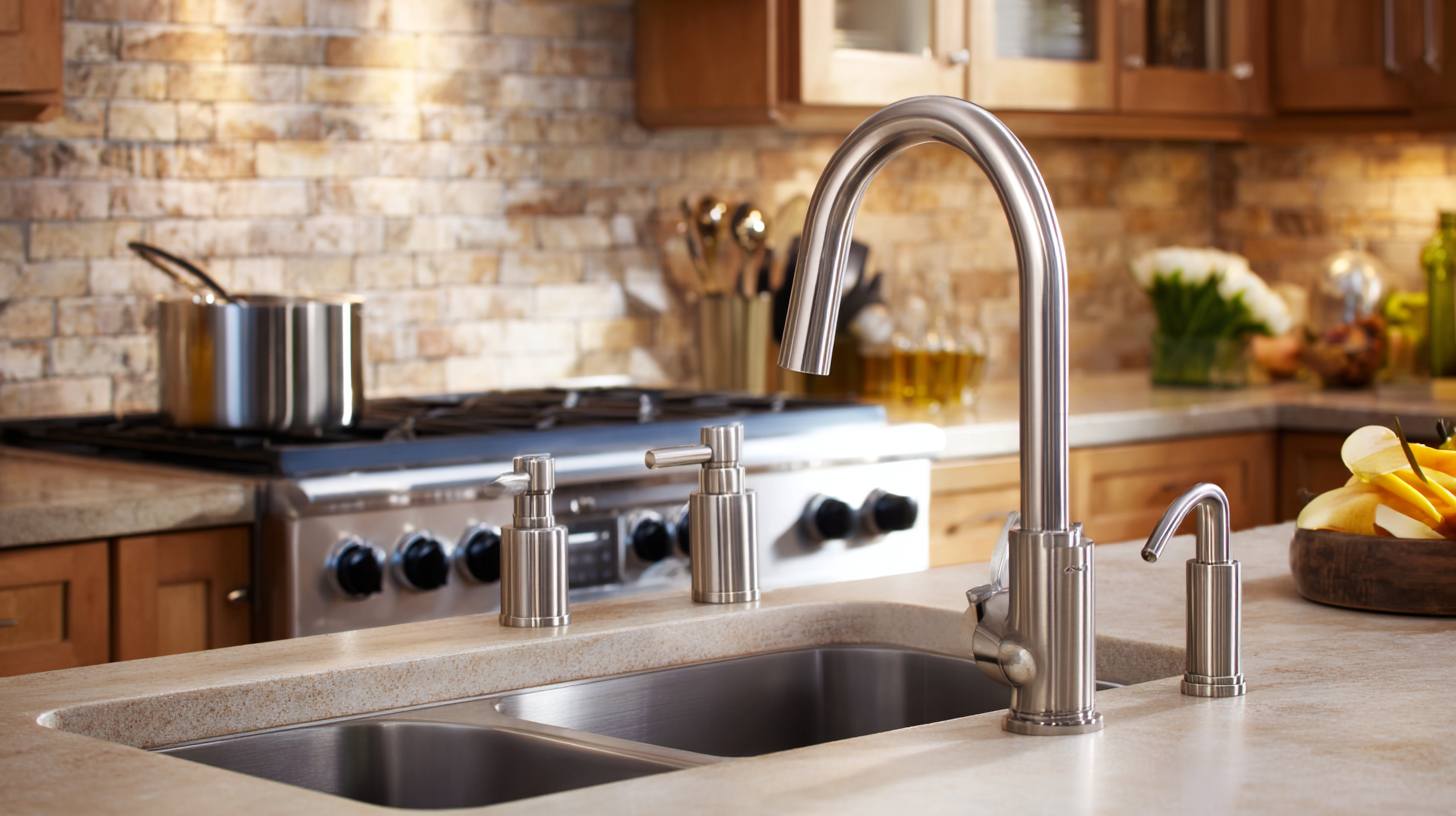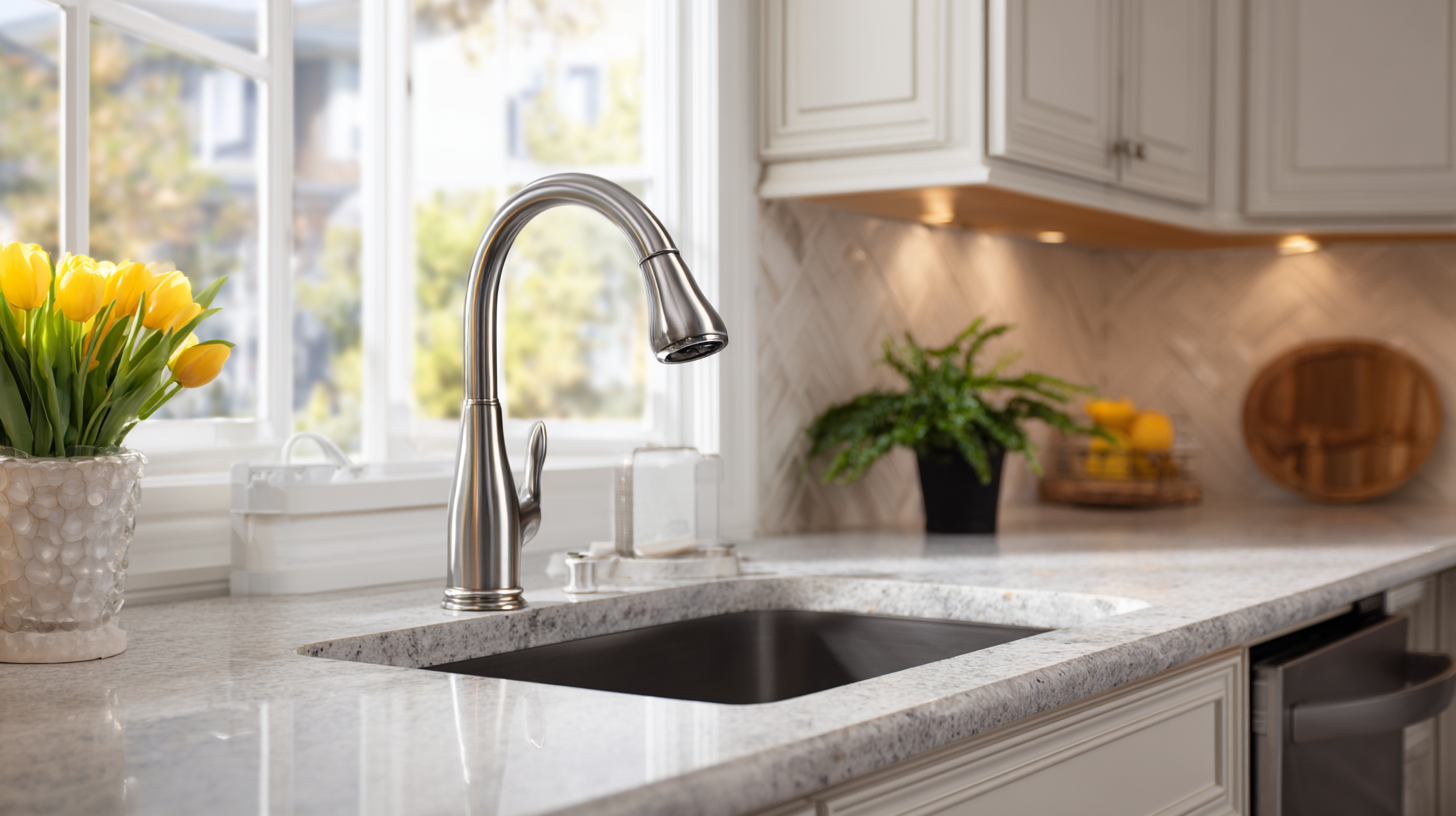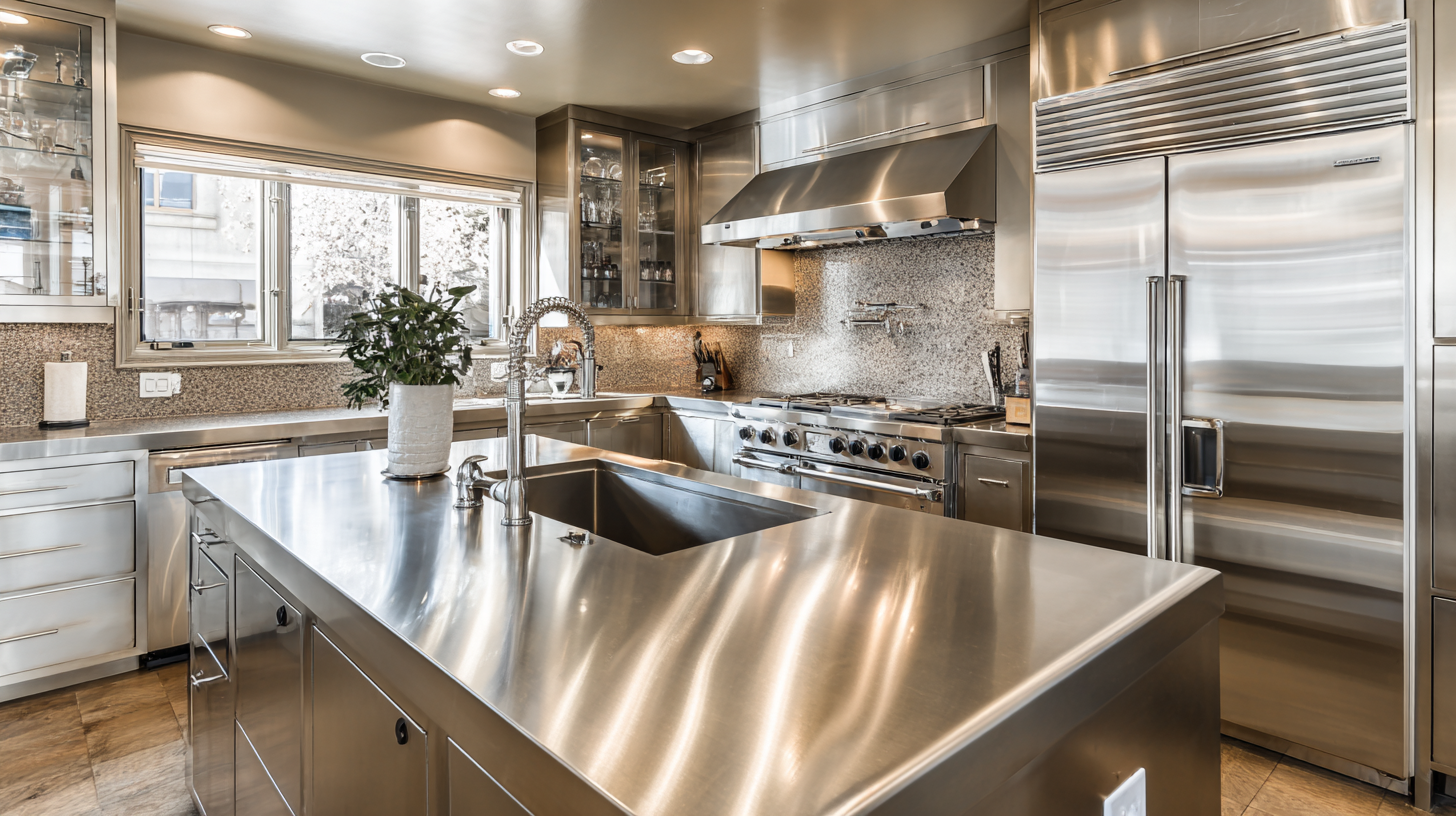In recent years, the global demand for Stainless Steel Kitchen and Bathroom Faucets has surged, driven by increasing consumer awareness of quality and hygiene. According to a recent report by Grand View Research, the global kitchen faucet market is projected to reach USD 9.86 billion by 2025, with a compound annual growth rate (CAGR) of 7.5%. This rapid growth indicates a shift towards durable and aesthetically pleasing products, particularly those made from stainless steel, which is favored for its resistance to rust and corrosion.

As Chinese manufacturers increasingly focus on innovation and quality, they are not only meeting domestic demands but also capturing significant shares of international markets. However, these advancements come with their own set of challenges, including maintaining consistent quality, navigating export regulations, and addressing the competitive landscape. This blog will explore the innovative applications of stainless steel faucets and the common challenges faced by manufacturers as they strive to conquer the global market.
The evolution of stainless steel faucets in modern kitchens and bathrooms emphasizes not only aesthetic appeal but also functional innovation. The U.S. faucet market is projected to grow significantly, from $6.27 billion in 2025 to an expected $9.38 billion by 2032, showcasing a robust CAGR of 5.9%. This growth is largely driven by the increasing consumer demand for advanced features, such as touchless technology and integrated smart systems. As homeowners seek to enhance their living spaces, the design trends of 2025 reflect a shift towards cleaner lines and minimalist aesthetics in kitchen and bathroom fixtures.
Stainless steel faucets, with their durability and resistance to tarnishing, are becoming central to modern design. According to market analyses, the global faucet market is estimated to reach around $51.17 billion by 2034, indicating a shift towards more sophisticated designs that align with contemporary lifestyles. The focus on innovative solutions also extends to sink designs, which are expected to grow from $8.26 billion in 2025 to $11.53 billion by 2033, reflecting a broader trend towards well-designed, functional spaces that seamlessly integrate with home décor. This transformation highlights the importance of innovation in catering to the evolving preferences of consumers.

When selecting high-quality stainless steel faucets, durability and style should be at the forefront of your decision-making process. Look for faucets that feature robust construction, such as solid brass bodies with a stainless steel finish, which not only enhances their longevity but also ensures they resist corrosion and tarnishing. Leveraging advanced engineering, these faucets can withstand the rigors of daily use, making them ideal for both kitchens and bathrooms.
To further enhance your experience, consider faucets with innovative features like touchless operation, which promotes hygiene by minimizing the spread of bacteria. This is particularly beneficial in kitchen areas where food is prepared. Additionally, adjustable water flow and temperature controls can lead to greater efficiency and comfort during use. When shopping for faucets, ensure they display certifications for quality and performance to guarantee you are investing in a product that meets high standards.
Finally, remember that aesthetic appeal is just as important as functionality. Choose styles that complement your overall decor, whether you prefer a modern minimalist look or a more classic design. Numerous options available today can seamlessly blend with your kitchen or bathroom, accentuating the space while delivering the practicality you need.
When it comes to selecting stainless steel faucets for kitchen and bathroom applications, understanding industry standards is crucial for ensuring quality and durability. These standards govern everything from the materials used to the manufacturing processes, ensuring that the faucets are not only aesthetically pleasing but also functional and long-lasting. Familiarizing yourself with these specifications can help you make informed decisions that benefit your home and lifestyle.

One important tip when choosing stainless steel faucets is to look for products with certifications from recognized industry organizations. These certifications often signify that the faucet has passed rigorous testing for safety and performance. Additionally, consider faucets that are made from 304-grade stainless steel, as this type of material is known for its corrosion resistance and durability under various conditions, making it ideal for both kitchen and bathroom environments.
Another challenge consumers may face is the maintenance of stainless steel faucets. To keep your faucets looking new, regularly clean them with a gentle detergent and a soft cloth, avoiding harsh chemicals or abrasive cleaners that can damage the finish. Opting for a faucet with a brushed or satin finish can also help minimize the visibility of water spots and fingerprints, ensuring a clean and polished appearance in your home.
Maintaining stainless steel faucets in kitchens and bathrooms can be a challenging yet necessary task for homeowners. According to a 2022 report by the Home Improvement Research Institute, approximately 30% of homeowners experience problems with faucet maintenance, leading to decreased functionality and aesthetic appeal. Common issues include water spots, mineral buildup, and tarnishing, all of which can diminish the overall look of premium stainless steel finishes.
To combat these challenges, regular cleaning is essential. Experts recommend using a mixture of warm water and mild dish soap to create a gentle solution for daily use. For heavier deposits, a paste made from baking soda and water can effectively remove stubborn mineral buildup without scratching the surface. A protective polish specifically designed for stainless steel can also safeguard against tarnishing and provide a long-lasting shine, enhancing the longevity of the faucet. The National Association of Home Builders notes that well-maintained faucets can last up to 15 years longer than those neglected, underscoring the importance of effective maintenance strategies.
This chart illustrates the common challenges faced when maintaining stainless steel kitchen and bathroom faucets. Each challenge is rated on a scale from 1 to 10, indicating the level of difficulty involved in overcoming it.
As the faucet industry evolves, new trends are emerging that focus on smart technologies and sustainable materials. According to a recent market report by Grand View Research, the global smart faucet market is projected to reach $2.38 billion by 2026, driven by increasing consumer interest in convenience and water conservation. Features such as touchless activation and sensors are becoming standard in modern kitchens and bathrooms, making faucets not only functional but also user-friendly.
To fully embrace these innovations, homeowners can consider incorporating smart faucets that integrate seamlessly with home automation systems. When choosing a faucet, look for models that provide real-time water usage data, helping you make more informed decisions about conservation. Additionally, opt for designs that use high-grade stainless steel, which not only enhances durability but also complements contemporary aesthetics.
Tip: Always check for certifications, such as WaterSense labels, to ensure that the faucets you choose meet energy efficiency standards. This not only helps reduce water bills but also contributes to a more sustainable environment. Staying ahead of these trends will prepare you for the future of faucet technology while enhancing your home’s overall efficiency and style.
